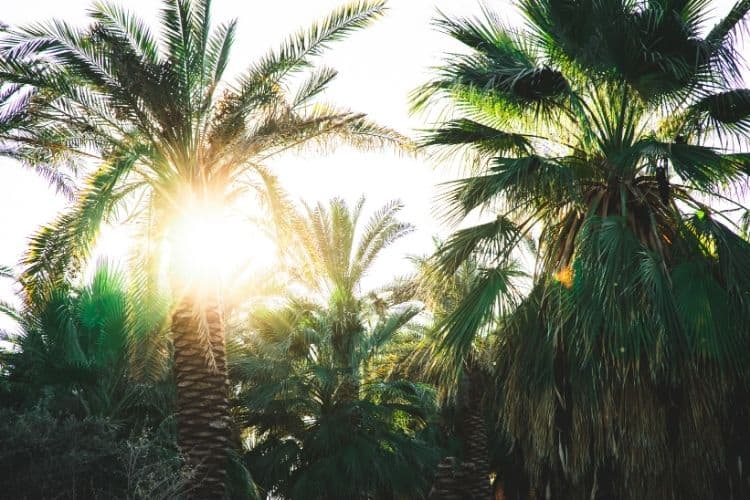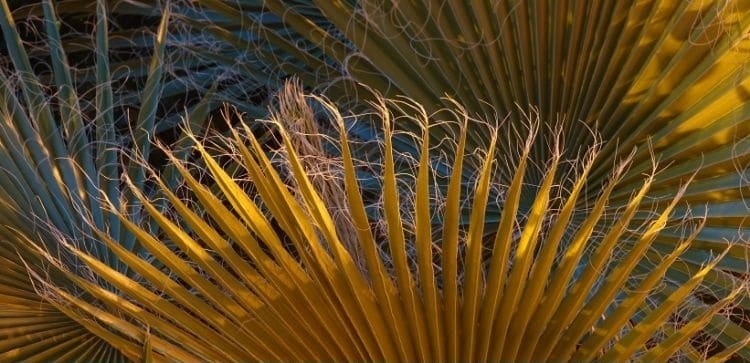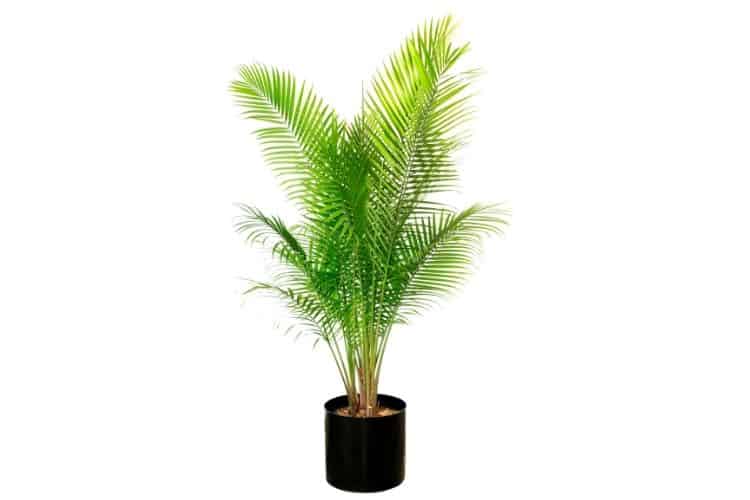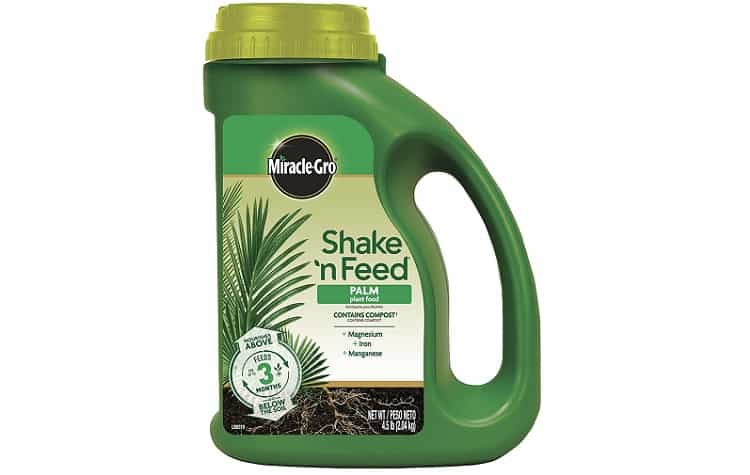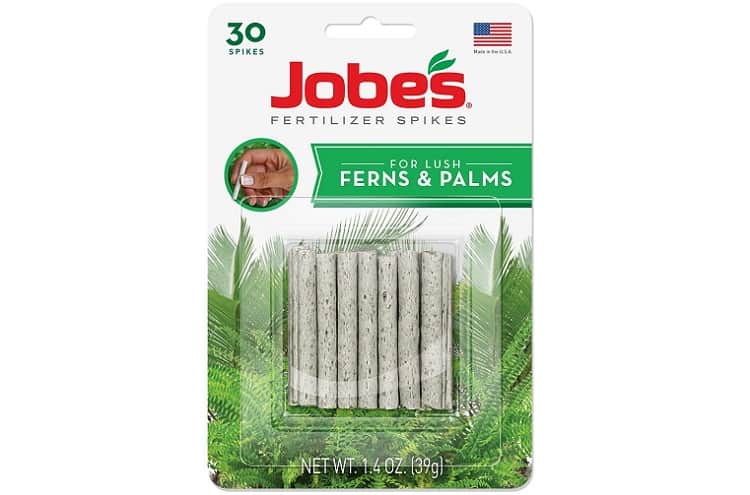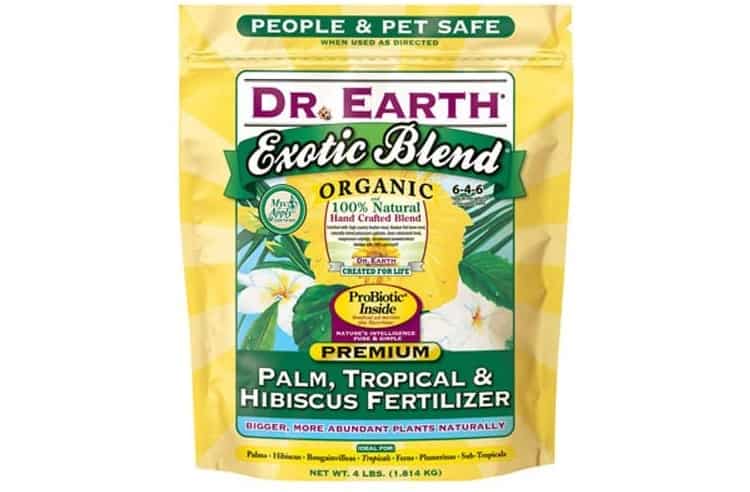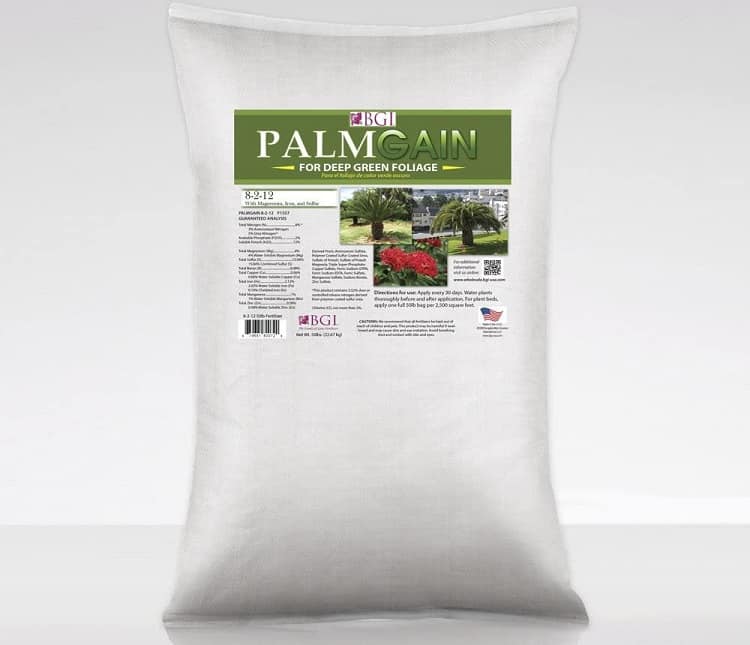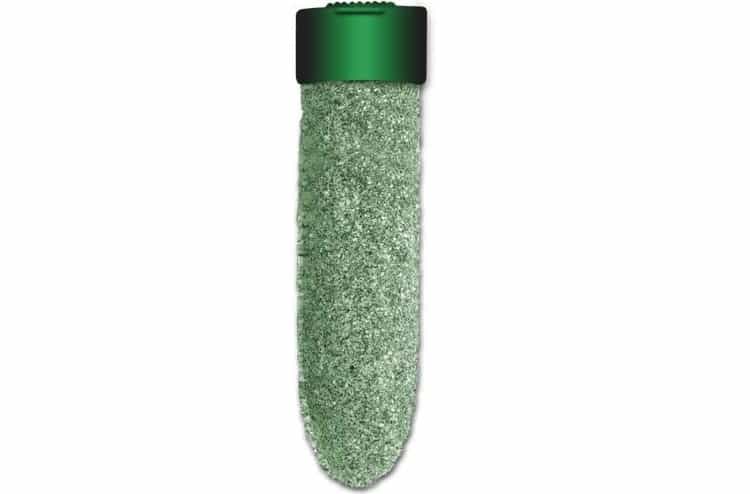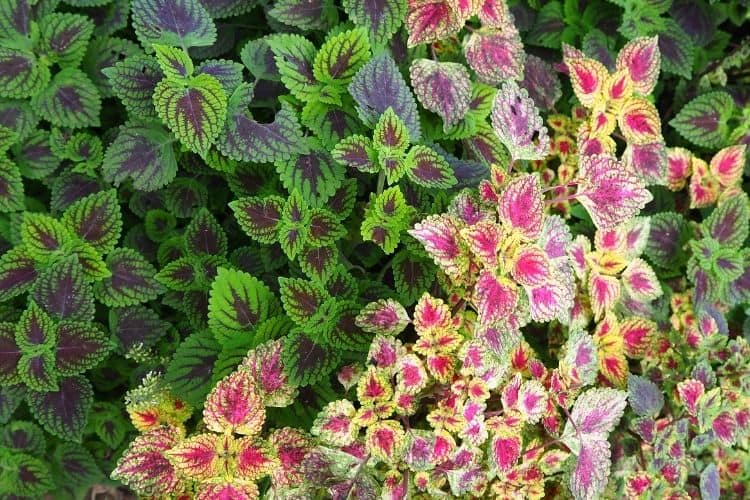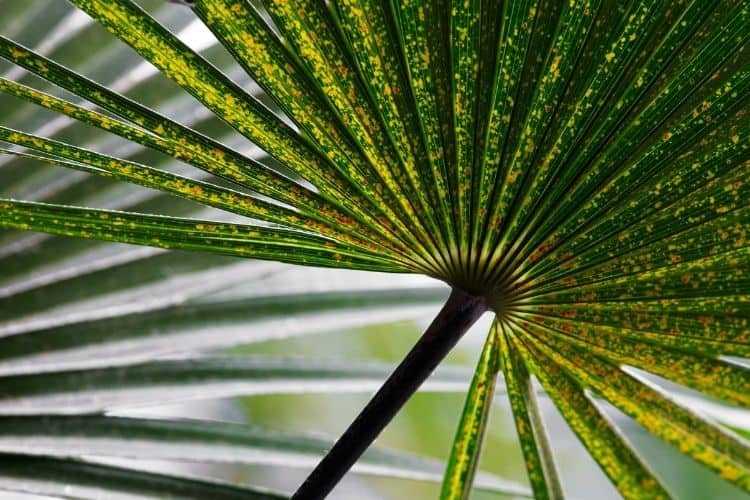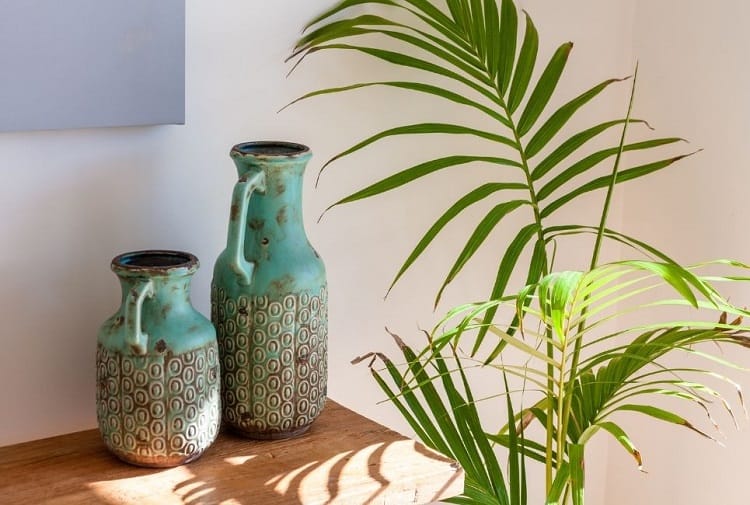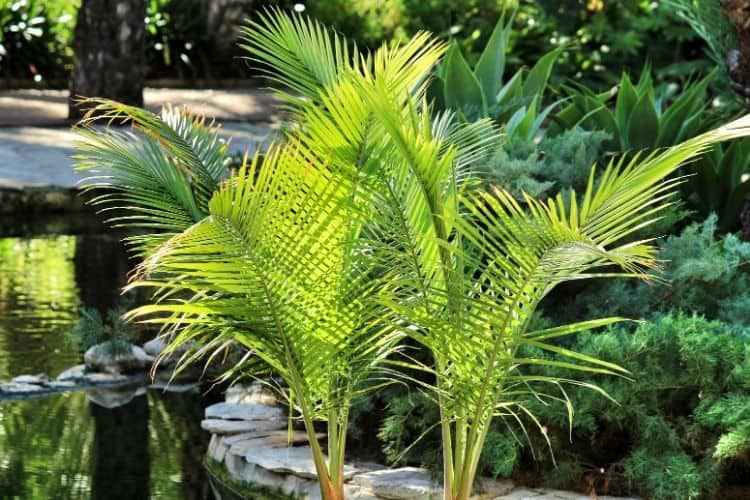- Majesty Palm Tree: How to Plant It and Keep It Alive - March 13, 2021
Majesty palm tree (Ravenea rivularis) is part of the family Arecaceae. It’s a beautiful palm tree that can rough it outdoors but can also be an excellent addition to your living room. With their symmetrical fronds and lush leaves, these palm trees are a sight to behold.
Palms, in general, have different care requirements. Compared to ordinary houseplants, they need different nutrients, consistent watering, a lot of bright light, and protection from diseases. These requirements are probably the reason why some people think that majesty palm trees can be a handful.
However, knowing what these trees need can make caring for them a whole lot easier. Read on and find out just how you can keep your majesty palm tree healthy and thriving.
How to Identify Majesty Palm Tree
How do you know for sure if you have a majesty palm tree growing in your yard or perhaps if it’s the one growing down the street? Here are the telltale characteristics of the majesty palm tree.
Trunk
The majesty palm tree has a trunk that can range from 16 to 72 feet (five to 22 meters) high. The trunk can be purely cylindrical or slightly fatter in the middle.
The trunk can be anywhere from 14 to 20 inches (36 to 50 centimeters) in diameter, but it tapers off near the crown to about six to seven inches (15 to 18 centimeters) and bulges at the base.
Leaves
At the top of the singular trunk are the fronds, which are long and dark green. The leaves are pinnate in form, which means that it takes on the form of a feather with a main frond and slender leaflets on both sides.
The long leaves can curl down, which makes the majesty palm look very graceful. What’s more, the leaves are also arranged in a regular pattern, which gives the majesty palm tree its neat appearance.
Majesty palm trees often have white or off-white inducements, which are fine hair-like bristles. The leaves are green throughout and have very visible secondary veins and midrib.
It also has a smattering of tan or brown ramenta, or scales, seen on the underside of its leaves.
Fruits and Flowers
Majesty palm tree produces small spherical fruits that are bright red and measure anywhere around 0.4 inches (a centimeter) long. Male and female blooms are found on separate plants.
Erect staminate flowers are usually found in multiples of five to seven and found in branches that are 34 to 35.5 inches (86 to 90 centimeters) long. One flower stalk can measure 12.6 to 18 inches (32 to 45 centimeters). Petals are ovate in shape.
Pistillate flowers are solitary and erect. It’s branched in one order, usually 51 to 59 inches (130 to 150 centimeters) long, while flower stalks measure 16 to 23.6 inches (40 to 60 centimeters). These flowers have a triangular or ovate shape.
Distinguishing Features
Majesty palm trees are often confused with the sagisi palm (Heterospathe elata), except that the sagisi usually have irregularly arranged leaves that are initially bronze or reddish.
To help you tell the majesty palm tree apart from the sagisi or any other palm, here are the distinguishing features of a majesty palm tree are:
- Single tapering and pale gray trunks that bulge at the base
- Prominently visible leaf scars
- The absence of crown shaft
- Spineless and toothless pinnate leaves
- The leaf sheath has fibers but not entirely covered by a mass of it
- Leaflets are the same color throughout, with visible midribs, ramenta, and secondary ribs
Where Does Majesty Palm Tree Grow
While the majesty palm tree is a popular ornamental plant indoors, it’s native to Madagascar, where you can find it along river banks.
You can also find it in southern California, and it can grow anywhere in the US Department of Agriculture hardiness zones 9 to 11.
Uses of Majesty Palm Tree
Majesty palm trees can be grown as houseplants. They will probably not outgrow your indoor space because they can take time to really grow tall, and they might go into dormancy during the colder months as well.
As such, the majesty palm is an excellent addition to your home’s interior. The dark green leaves will blend in nicely with any décor and color scheme you have. You can use it to make an empty corner of your home come alive. Or you can line planters of majesty palm trees so that you can have a screen or divider.
You can even plant it outside to provide shade to your balconies, patios, or decks. These palm trees can give your gardens and outdoor space a great focal point and a tropical feel.
But more than just aesthetics, the majesty palm tree can help purify the air inside your home. It can remove carbon monoxide, benzene, xylene, and formaldehyde.
- Xylene may be ingested or inhaled. You can also be exposed to this hazardous chemical via skin contact. Small amounts of exposure can cause headaches, dizziness, irritability, weakness, or nausea. It can also irritate your throat, eyes, nose, and lungs.
- Formaldehyde in small amounts can cause a burning sensation in the eyes, throat, and nose. It can also cause watery eyes, nausea, skin irritation, and wheezing. Some studies link formaldehyde with cancer.
- Benzene can cause dizziness, drowsiness, headaches, confusion, irregular heartbeat, and other similar symptoms, including death and unconsciousness.
How to Grow Majesty Palm Tree from Seed
In general, plants from the palm family cannot be propagated using cuttings, division, or air layering. They need to be started from seeds.
Majesty Palm Tree Growing Conditions
Like any other plant, keeping your majesty palm tree alive and thriving requires you to know what it needs. It grows best in well-draining soil that can hold a bit of moisture. The soil should also have pH levels of 5.0 to 6.0.
You will need to irrigate these plants thoroughly without leaving them in standing water. You should also avoid getting its soil very dry.
This plant will do well in the hotter regions such as those that fall under USDA hardiness zones 10 to 11. It can be grown outside as part of your landscape or as houseplants inside the home.
How to Plant Majesty Palm Tree
You should not deeply bury palm seeds; instead, you cover the seeds with a very thin layer of soil. You can even leave them half exposed.
One excellent and easy way to do that is to put the seeds in a small container, add just enough soil to keep it half-buried, and then place it in an area where it’s very humid and warm. A steam bathroom will be the perfect place to put the container of palm seeds. Or you can just cover the container with cling wrap or any other plastic bag and then put it in a warm place.
For most palms, germination may take anywhere from seven days to six months. However, it’s recommended that you soak the seeds in water for three days before sowing them. Majesty palm seeds can germinate in as little as three weeks, but it can take considerably longer than that.
When to Plant Majesty Palm Tree
If you live in the hotter regions, you can plant your majesty palm tree any time of the year. But suppose you reside in an area where the winters are cold.
In that case, you might consider planting the seeds during the first weeks of spring and right throughout summer so that they can get the humidity and temperature it needs to germinate and sprout. Planting during this time also gives your new seedlings the ideal conditions for them to grow.
Caring for Majesty Palm Seedlings
Newly sprouted majesty palm seedlings need to be moved to a very warm place with temperatures of around 75 degrees Fahrenheit (24 degrees Celsius). They also need to be placed in an area with high humidity.
The seedlings will require filtered sunlight.
Majesty Palm Tree Sun Requirements
When planting outdoors, choose a location with light to the moderate sun. Suppose you’re going to keep the majesty palm tree indoors. In that case, you will need to place it somewhere sunny and warm, preferably with temperatures ranging from 70 to around 100 degrees Fahrenheit (21 to 38 degrees Celsius).
In general, majesty palm thrives in bright areas with indirect sunlight, but it can also survive with a little less light than it prefers.
Majesty Palm Tree Water Requirements
When you’re still starting your majesty palm tree, it helps to water daily to encourage the seeds to germinate. You should thoroughly soak the soil, but be sure not to overwater it.
When it’s already established, you will need to water your majesty palm tree every week or every two weeks. You will want to avoid the soil from getting dried out completely as this plant likes the soil moist but not waterlogged.
You will also need to water more during the summer when days are hotter and more evaporation happens. Letting the soil get too parched can cause the tips of the leaves to curl or brown. In worst cases, you might lose the lower leaves of your majesty palm tree when it gets parched.
Humidity
Right from the start, the majesty palm tree likes high humidity. But these plants can easily survive in average humidity levels in the home.
When the cold air gets dry during the winter, you can run a humidifier to keep the humidity levels up around the home. Misting your majesty palm tree can also help when humidity levels are low.
Best Majesty Palm Tree Fertilizer
First off, you should not use regular lawn fertilizer for fertilizing majesty palm trees. These fertilizers have high nitrogen to potassium ratio, and there is almost no magnesium in them. What these mean is that these fertilizers will not give your majesty palm the nutrients it needs.
There are fertilizers that are specially formulated for palm trees. These products have:
- Eight percent nitrogen
- Two percent phosphorus
- 12 percent potassium
- Four percent magnesium
Get slow-release formulas that will continually nourish the soil without burning your majesty palm.
Some of the products that you can try include:
Miracle-Gro Shake ‘N Feed Palm Plant Food
This fertilizer has manganese, iron, and magnesium that will help your majesty palm tree thrive. It can prevent the curling or yellowing of fronds. The slow-release formula can feed your palm for three months and will not burn the plant.
You only need to open the container and shake the dry pellets of fertilizer into the soil along the drip line away from the trunk. This fertilizer has an NPK ratio of 8-2-12, and a 4.5-pound (two kilograms) is enough to cover an area of 300 square feet (28 square meters).
Jobe’s 05101 Fern & Palm Fertilizer Spikes
This Jobe’s product is an easy way to keep your majesty palm tree fertilized. Each spike is already pre-measured, and you don’t have to deal with the mess or smells that other fertilizers have.
What’s more, you sink it into the soil, so the nutrients go directly to where the roots are. It also doesn’t wash away when you water your majesty palm tree.
This fertilizer has an NPK ratio of 16-2-6 with trace amounts of calcium and magnesium.
Dr. Earth INC 756P Exotic Exotic Blend Palm, Tropical & Hibiscus Fertilizer
The Dr. Earth INC 756P Exotic Exotic Blend Palm, Tropical & Hibiscus Fertilizer, has an NPK ratio of 5-4-6, along with two percent magnesium and 4.75 percent sulfur. You can use this for new palm trees by adding a cup (128 grams) of this fertilizer to the soil and watering the new plant thoroughly after planting.
For mature majesty palm trees, you can use anywhere from half to three-quarters of a cup (64 to 96 grams) for every foot (30.5 centimeters) of your tree’s height. Keep the fertilizer away from the trunk.
This fertilizer is certified non-GMO and is safe for both people and pets.
PALMGAIN Palm Tree Fertilizer
If you have many majesty palm trees planted in and around your house, you can get this 50-pound (22.6 kilograms) bag of fertilizer. But don’t worry that it’s too much; this formulation is also great for Ixora, cycads, ferns, and other ornamental plants. This product provides your majesty palm with the major nutrients it needs with an NPK ratio of 8-2-12.
More than that, it can nourish your majesty palm with iron, magnesium, and sulfur, as well as other micronutrients that help to keep it lush green and healthy.
TreeHelp Complete Palm Fertilizer Spikes
The TreeHelp Complete Palm Fertilizer Spikes gives your majesty palm trees all the essential nutrients it needs, such as magnesium, manganese, and potassium. What’s more, these granules can make these nutrients readily available to your plants.
These spikes are slow-release and can last up to 12 months without needing to be replaced. The NPK ratio is at 6-0-6. It also has six percent manganese and the same levels of magnesium.
General Guidelines When Fertilizing Majesty Palm Trees
If you plan to use the fertilizers you have at home, you should think about adding Epsom salt to your nourishment routine. Epsom salt will give your plant the magnesium it needs to grow green and keep the tips of the leaves from yellowing.
Majesty palm trees planted outdoors should be fertilized every two months from April to September. You should spread fertilizer granules evenly over the root zone of the tree. Use 1.5 pounds (680 grams) of fertilizer to cover 100 square feet (9.2 square meters) of land.
If you planted majesty palm trees on your lawns, you should know that using lawn fertilizer will not give your majesty palm tree the nutrients it needs to survive. Consider using palm fertilizer for your lawn grasses as well.
Meanwhile, majesty palms growing in pots may need more nitrogen, such as using a liquid fertilizer with an NPK ratio of 18-6-12. If you used a potting mix to start your palm tree, it should have a steady supply of magnesium if it uses dolomite.
It’s crucial to remember that the dolomite in your potting mix will probably be exhausted within six months. Add more dolomite to your potting mix when the majesty palm becomes too big for its pot, and you need to repot it.
Lastly, avoid fertilizing your majesty palm when it’s not actively growing.
Best Majesty Palm Tree Companion Plantings
Knowing the ideal growing conditions for a majesty palm tree to grow and thrive, you can choose the perfect companion plants for it. The best ones are:
- Coleus is a great companion plant for your majesty palm tree because it is sun-tolerant. Depending on the variety, these plants can also thrive in the shade or part-sun. Like the majesty palm tree, coleus needs constant watering but not too damp soil. What’s more, the different varieties of coleus have different colors and patterns, which may contrast nicely to the green color of the majesty palm.
- Impatiens also have the same watering requirements as majesty palm trees. However, because these plants like the shade, they might be a good companion plant for bigger majesty palms with more leaves casting a shadow.
- Wishbone flower is another option for companion plants. This plant produces bi-color blooms that can add a touch of color to your majesty palm. And they basically have the same care requirements as your palm tree, as long as you can provide it with afternoon shade.
According to this page, these are also excellent companion plants for your majesty palm:
- Dumb canes, or dieffenbachia
- Peace lily
- Alocasia
Majesty Palm Tree Diseases and Common Problems
Majesty palm shares a lot of the diseases and problems that most palms have. Here are some of the most common and how to treat them:
Leaf Spots
Leaf spots are caused by fungi. These spots may be elongated or round, brown or dark-colored, and it may sometimes be oily.
Avoid watering on leaf spots. For the most part, leaf spots will not kill your plant, but you can get fungicidal sprays with copper in them if the damage is too much.
False Smut
False smut affects palms in the Arecaceae family and is caused by different types of Graphiola. It’s usually seen in places with high humidity,
False smut appears as wart-like and black structures on the leaf surfaces. These small spots may develop filaments.
To prevent false smut, you should give enough space between your majesty palm trees so that these plants get a lot of air circulation and lower humidity. When you water your plants, do not get the fronds wet.
If the leaves have been damaged, prune the affected leaves and destroy them to prevent the spread of the disease. But do not remove too many fronds at a time because doing so may weaken the plant.
You can use some fungicides to prevent false smut from developing.
Ganoderma Root and Butt Rot
This disease is caused by Ganoderma zonatum. A common type of fungal infection among palms, your majesty palm tree’s older fronds will first wither and then droop to the point that the affected frond will become parallel to the tree’s trunk.
New growth will be smaller than usual, and it will be yellowed or pale green. The head may also fall off. If the fungi reach the root, they will be damaged or decayed as well.
The trunk may sound hollow when you knock on it. This fungal infection can kill your majesty palm in three to four years.
To avoid getting your plant affected, you should remove all affected parts, including the stumps and roots. Be careful when you’re handing your majesty palm, and don’t let it get injured while planting, repotting, or when you’re raking or mowing the lawn.
Bud Rot
Bud rot shows up on your plant as black lesions on affected young fronds. The leaves on these young fronds will soon wilt and die. The disease is caused by several types of fungi, including Phytophthora and Thielaviopsis. Or it may be sometimes caused by bacteria.
Bud rot is also caused by bacteria, which can infect it when winter temperatures damage the bud or young fronds.
The rot will be firm at first but may become slimy as time wears on as new invaders come. The newer leaves and fronds are the first to die, while the older ones will follow, leaving your majesty palm with a bald trunk.
Do not water your majesty palm from above so that the leaves do not get wet. If an infection happens, the infected portions should be pruned and destroyed. You can also use fungicides to prevent disease in the first place.
Pests and Insects
Aside from fungal infections, your majesty palm tree is also susceptible to insect infestations. Some of the most common are:
- Spider mites, which look like small dots on the underside of your palm trees’ leaves. If the plant is indoors, you can take it outside and spray your plant using a garden hose. If you can’t move it, you can use a commercial miticide or soapy water and spray it on the leaves.
- Palm aphids can suck the life out of your tree. Palm aphids feasting on your majesty palm tree can leave the leaves yellowed and may invite mold fungus. You can wash your palm tree with dishwashing soap or insecticidal soap to get rid of these insects.
- Different types of scale insects can also infest your majesty palm tree. These insects work as aphids do, and you can use the same treatment you use for aphids to get rid of scale insects.
Nutritional Problems
Apart from diseases, majesty palm trees can also have problems with nutrition. Palms, in general, often lack nitrogen, magnesium, manganese, and potassium, as well as calcium, boron, zinc, and copper.
If you have been fertilizing correctly, check to see if the soil needs to be aerated or if it’s too compact for the roots to absorb anything. You might have also planted your palm tree too deep into the soil, making it difficult for the plant to take up nutrients from the fertilizer you’re giving it. Or perhaps, the soil has the wrong pH levels.
So what happens if there’s a deficiency?
- Potassium deficiency: Older leaves become translucent and yellow with orange spots. Necrotic spotting follows, and new leaves will have unsightly marks on them. As the deficiency worsens, the newer leaves are affected as well. Lacking potassium can kill your majesty palm tree.
- Manganese deficiency: Leads to yellowing between the veins. Newer leave can emerge withered, scorched, or small in size. Manganese deficiency can kill your palm tree.
- Iron deficiency: Results in discoloration, primarily in the newer leaves. Your majesty palm will have green veins and yellow tissues. The tips will show discoloration as well, in severe iron deficiency.
- Nitrogen deficiency: Slows down the growth of your majesty palm, and the leaves are less vibrant and paler green.
- Magnesium deficiency: This leads to marginal discoloration, starting with the older leaves. Your majesty palm will have lemon yellow bands at the margins while the center remains green.
- Boron deficiency: This results in the leaves of the majesty palm looking crumpled and small. The trunk can develop sharp bends while the new buds die.
Majesty Palm Tree Treatments and Maintenance
The fantastic news is that if you give your majesty palm tree enough bright light, the right amount of watering, and feeding it the nutrients it needs, you will have an easier time handling and taking care of it and keeping it healthy. For the most part, a balance in everything is enough for the plant to thrive.
Of course, you can help it along too. For one, you can apply fungicides with copper on your majesty palm tree to make sure that it doesn’t fall prey to pathogens and get diseases. And you can prune it too.
Pruning Your Majesty Palm Tree
You might think that your majesty palm tree doesn’t need pruning. For one, the fronds turn out neatly, and the leaves are symmetrical. Plus, they grow slowly, so there’s really no danger of them getting overgrown.
Pruning is needed for wilted, diseased, or dried fronds. Once it turns brown, you should cut it off the main trunk. Pruning diseased fronds will also help stop them from spreading. However, do not over prune your majesty palm tree. If it’s still green and healthy, leave it alone.
The tree will need the leaves to process the nutrients it needs, and cutting off too many fronds will weaken it, and it may even die. The palm tree will also recycle the nutrients from the dying palms and direct them to healthier ones.
Another thing you should know is that pruning fronds will not encourage new growth. Your majesty palm tree will have a set number of fronds and leaves, and prematurely cutting one frond will not mean that it gets replaced by more fronds.
Using a sterile blade, prune the fronds at around three inches (7.6 centimeters) from the base. Leave the rest to die naturally and fall off.
This video will show you how to prune a palm tree correctly:
How to Remove Majesty Palm Tree
The best way to remove a dead majesty palm tree is to have it done professionally, especially for big trees with wide trunks.
But if you want to DIY it all and you have a trusty chain saw, you can just cut the trunk and have it fall over to a safe side. This video will show you how it’s done.
After that, you will need to take out the stump and the roots. It’s simple too and will not take a lot of time, just by dividing the stump using wedges until you break the stump apart. Here’s a video that will demonstrate how you do this:
Where to Buy Majesty Palm Tree Seeds Online
If you plan to propagate majesty palm trees from seeds, there are not many places online where you can buy them. The reason for that is because the seeds for this particular plant have very short shelf lives. You might find that the seeds you’ve purchased are no longer viable.
However, some retailers do sell seeds.
Real Palm Trees
Real Palm Trees give you only fresh majesty palm tree seeds. The more seeds you buy, the bigger the discounts get. What’s more, the seeds they send you to come from successful batches that have been successfully germinated.
This retailer also gives you easy-to-follow instructions to ensure germination.
Rare Exotic Seeds
Rare Exotic Seeds has more affordable seed packages that allow you to get twice as many seeds for your buck. They also offer free shipping for orders exceeding $50. Or if you’re not ordering that many seeds, you only pay $4.90 to have the seeds delivered to you wherever in the United States you are.
The only problem is the availability. Majesty palm seeds are currently out of stock. You can sign up for their mailing list to get notified when it’s back in stock.
TropicalSeeds.com
If you’re planning to sell majesty palm saplings or looking to grow a lot in your nursery, then this place is for you. You can get a minimum of 50,000 seeds that you can grow in your greenhouse.
Where to Buy Majesty Palm Tree Saplings Online
Several big-box retailers sell majesty palm trees in their store as well as online.
Lowes
Lowes has some potted majesty palm trees on offer. These plants can be displayed as is with its 1.94-gallon (7.3 liters) pot, making the plant a wonderful addition to your living room, porch, or veranda, just as long as it’s sufficiently bright.
Home Depot
Home Depot also offers several majesty palm trees online, including this one from Costa Farms. These majesty palm trees are already grown and are used to being indoors. It comes to you straight from the farm. This particular seller sells majesty palms around 38 to 44 inches (96.5 to 111.8 centimeters).
Garden Goods Direct
The saplings they sell are a bit more expensive than the big box retailers, but it’s like shopping at a local garden center. You get to have everything plant-related sourced from one retailer, and they can give you superior customer service, unlike the giant stores.
You have the option to choose a plant that’s three to four feet (91 to 122 centimeters) tall or four to five feet (122 to 152 centimeters) tall.
Etsy
For those who don’t know it yet, Etsy is no longer just a crafts marketplace, it now has a selection of plants, and some sellers offer majesty palms. Most of the choices here come with a three to five-gallon (11.4 to 18.9 liters) plastic pot, like this listing.
But some come with a lovely planter as well, such as this listing. And while you’re there, you might as well check out the selection of planters.
Amazon
Of course, when you talk about online retailers, you cannot exclude Amazon. Several sellers offer majesty palms on this giant online retailer, like the:
Fast Growing Trees
This site also offers majesty palm trees. They ship your plants growing in nutrient-rich soil rather than sending it to your bare root. You don’t even have to be a green thumb to keep your majesty palm tree healthy.
Frequently Asked Questions
Question: How often do you repot a majesty palm tree when it’s grown indoors?
Answer: While majesty palm trees might be slow-growing compared to traditional houseplants, you will still need to repot them to give the roots space to grow and change out the soil and give it fresh dirt with lots of nutrients.
According to this page, you should repot your majesty palm every other year. However, if the tree is getting too big for its pot, then it’s time to repot it. You should look for any signs of nutrient deficiency that may need you to augment the soil with magnesium, iron, manganese, and other trace nutrients.
Question: What is well-draining soil?
Answer: Well-draining soil holds enough water for your plants to take up and use to make their own food and transport nutrients.
But it doesn’t retain too much water that leaves your plants waterlogged. Clay soil, for instance, can be too moist for a long time, while sandy soil lets water flow even before your plants can get to them.
It’s recommended to use potting mix for cacti and succulents with majesty palm trees, but you should add peat to it. How do you know if you’re using well-draining soil?
Do a simple soil percolation test, as demonstrated in this video.
Question: Can you plant majesty palm trees together?
Answer: The thing with palm trees is that you can group them closely together if you want to. The roots will extend down the soil to get the nutrients the plant needs. And the trunks are typically more slender than the canopy created by fronds.
However, there are two things that you should consider when grouping majesty palm trees. The first is that it may look cluttered and closed in, especially when it grows to maturity.
The second is that the majesty palm tree often has canopies around six to eight feet (1.8 to 2.4 meters) wide, so you might want to consider that space between two majesty palm trees.
Keep That Majesty Palm Tree Healthy!
Remembering that majesty palm trees require a different kind of care can help you keep them alive. This nifty guide will teach you how to best take care of your majesty palm tree, whether you keep it inside the house or out in the garden.
Sources
- Centers for Disease Control and Prevention: Facts About Benzene
- Houseplant Resource Center: How to Care for a Majesty Palm
- National Cancer Institute: Formaldehyde and Cancer Risk
- Palmpedia: Ravenea rivularis
- Palms Online: Tips about Caring for Majestic Palms (Ravenea rivularis)
- Planting Tree:Air Purifying Plants
- SFGate Home Guides: How to Plant a Majesty Palm Tree
- SFGate Home Guides: What Kind of Fertilizer for a Majesty Palm?
- SFGate Home Guides: What Organisms Feed on Palm Trees?
- The Free Dictionary: Pinnate Leaf
- The Spruce: Majesty Palm Plant Profile
- The Spruce: Sprout Palm Trees From Seed
- US National Library of Medicine National Institutes of Health: Xylene: An overview of its health hazards and preventive measures
- Wikipedia: Indementum
- YouTube: Cutting Down a Dead Palm Tree
- YouTube: How to Prune a Majesty Palm
- YouTube: How to Remove Palm Tree Root by Splitting It into Sections -Try This Simple Solution
- YouTube: Soil Perc Test or Percolation Test


